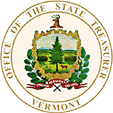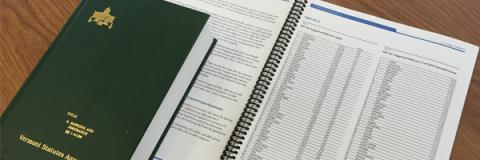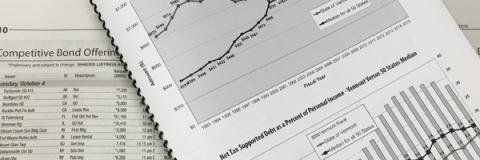MONTPELIER — One of the three major municipal bond ratings services has affirmed its high ratings for Vermont, but offered caution about the state’s future credit outlook.
Standard & Poor’s Ratings Services announced Tuesday that it was affirming its grade of Vermont’s general obligation bonds at “AA+” — the second-highest rating it offers.
However, the service has adjusted its future outlook for the state from “stable” to “negative,” based on concerns about its workforce demographics and its unfunded pension liability.
That, Vermont Treasurer Beth Pearce said, is essentially a warning that if the issues cited by the ratings service aren’t addressed, a downgrade could be in the offing.
“As noted by S&P, Vermont’s demographics and historic population trends have not been favorable,” Pearce said Tuesday in announcing the grade. “Additionally, the State’s retirement liabilities have grown, despite ongoing reforms and the General Assembly’s sustained efforts to meet or exceed actuarially determined contribution levels.”
“While the rating has not changed, the negative outlook is an additional wake-up call that we need to address both our demographic changes and pension liabilities,” Pearce said.
But Pearce is confident that the state can and will tackle those issues and eventually regain a top-tier AAA rating from Standard & Poor’s.
“It is a time for concern,” she said of the “negative” outlook. “With aggressive management we can address these issues together.”
Secretary of Administration Susanne Young said the bond report didn’t offer any surprises, but serves as a helpful reminder of what the state needs to do to solidify its long-term financial health: Address its aging population, which is affecting the state’s workforce and tax revenues, and bring its $4.5 billion unfunded pension liability under control.
“I view the revising of the outlook as another warning,” Young said. “And it’s always good to get these and to keep in mind that they’re watching right before a legislative session — that we’ve got more work to do.”
That work includes significant leaps in the catch-up payments the state must make to close the gap on its pension liability by 2038.
Pearce, in letters to Gov. Phil Scott dated Oct. 30, informed the administration that the state’s employee retirement boards were asking for $157 million in catch-up amortization payments for the state teachers’ pension, and another $84.8 million for the state employees’ pension. Those requests are based on third-party actuarial studies of the state’s pension funds.
But in those same letters, Pearce advised Scott that she’s been directed to work with stakeholders to reduce those payments to their 2021 levels. She has until Jan. 15 to present that plan to Scott and to the Legislature.
Young said the state’s elected officials need to work together to address the unfunded pension liability.
“The only way to pay for that is taxpayer dollars out of the general fund, or you increase the pressures on the employees. That’s a tough nut to crack,” Young said. “Or you change the benefits and that’s a very difficult discussion for folks. But it’s one we hope the legislature will take up in a real way this year.”
Between the Standard & Poor’s revision and the increase in the state contribution, “it may really prompt a hard look in what we’re doing with our pension system,” Young said. “But we need to really partner with the legislature, particularly with the majority.”
Bond ratings are an indicator of an institution’s creditworthiness, and are used by investors to decide where to put their money. The other two major bond rating houses, Moody’s Investor Service and Fitch Inc., also have Vermont at their second-highest grades — “Aa1” for Moody’s, and AA+ for Fitch’s. Those two services reaffirmed Vermont’s bond grades in June.
Government entities issue bonds to borrow money for capital projects such as highways, bridges and other public works. The bond rating affects the interest rate that municipal borrowers must pay, which is ultimately passed along to taxpayers. States with higher bond ratings generally pay lower interest rates when it comes time to borrow, and vice-versa.
Pearce put S&P’s decision in context, noting that COVID-19 has exerted a great deal of pressure on state finances across the country.
“According to our financial advisor, there have been 17 negative revisions of other states by the three major rating agencies since March,” Pearce said. “We recognize that more work needs to be done to continue to maintain our best in New England bond ratings. ... Our goal will be to regain our stable outlook, and ultimately achieve a triple-A bond rating.”
Peace also noted the S&P report praises many of Vermont’s fiscal management practices, including “‘regular forecast updates, annual midyear budget adjustments, consistent reserve levels across economic cycles, and debt affordability oversight.’
“The Treasurer’s Office has always worked collaboratively with the Governor and the General Assembly on these strengths and challenges, and we look forward to continuing to address these issues together in the new biennium. This will require a joint effort by all parties,” Pearce said.





